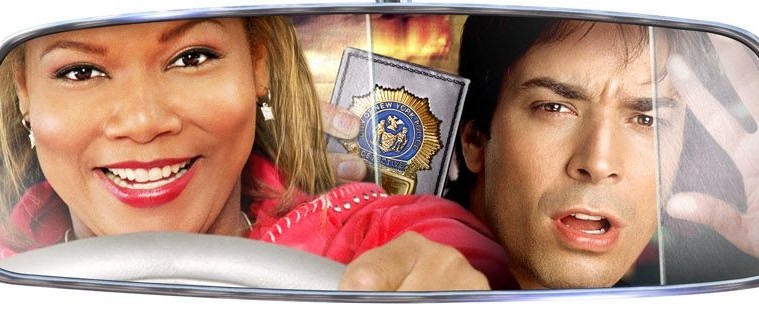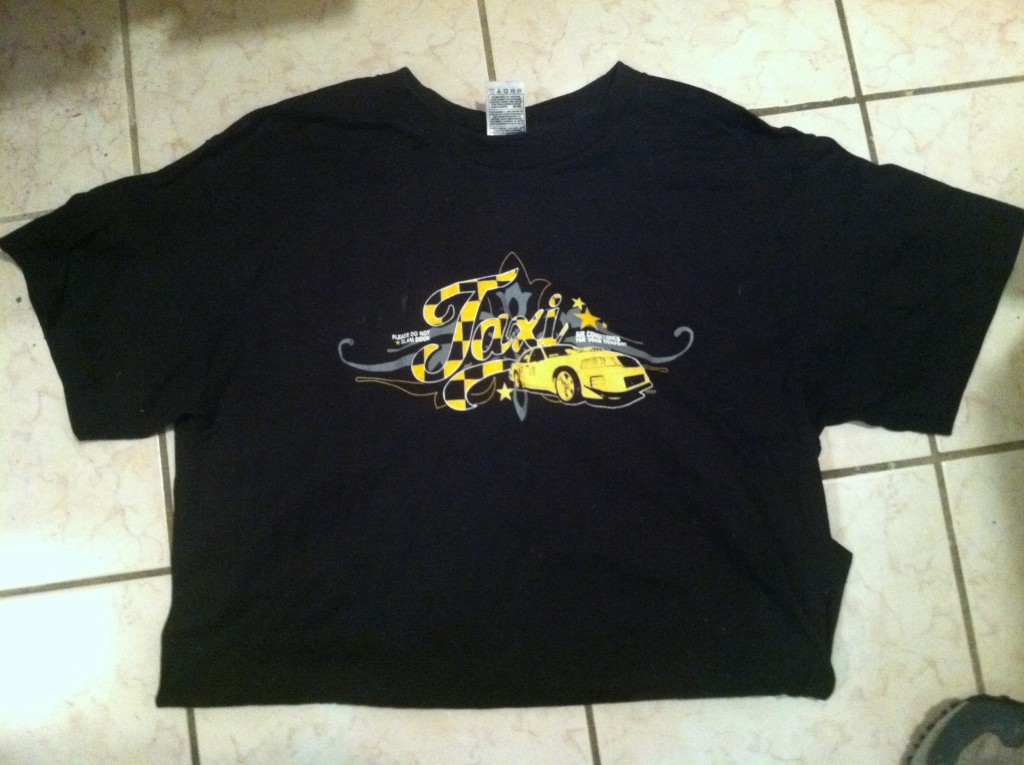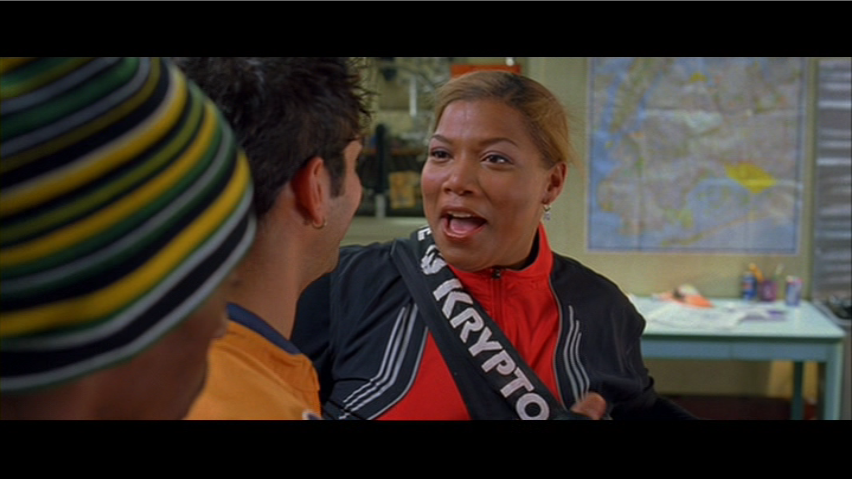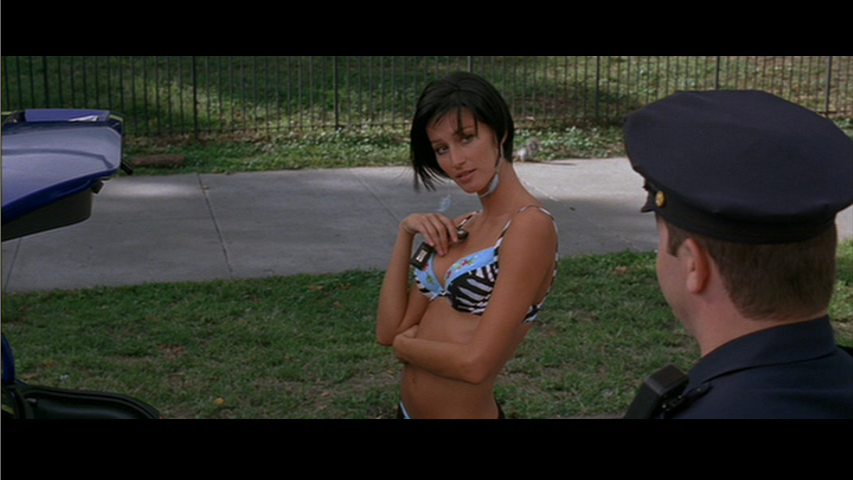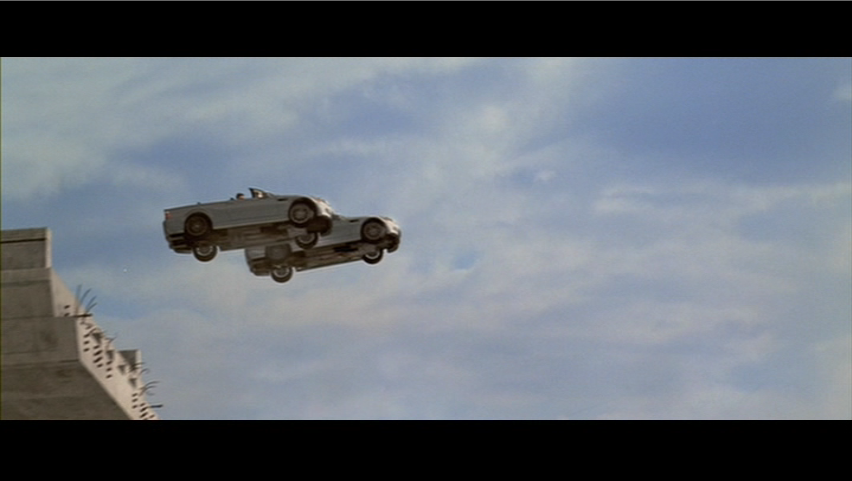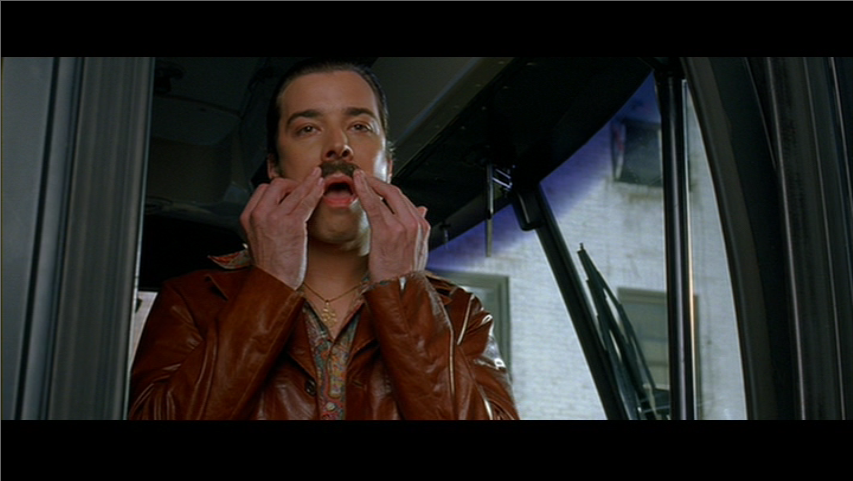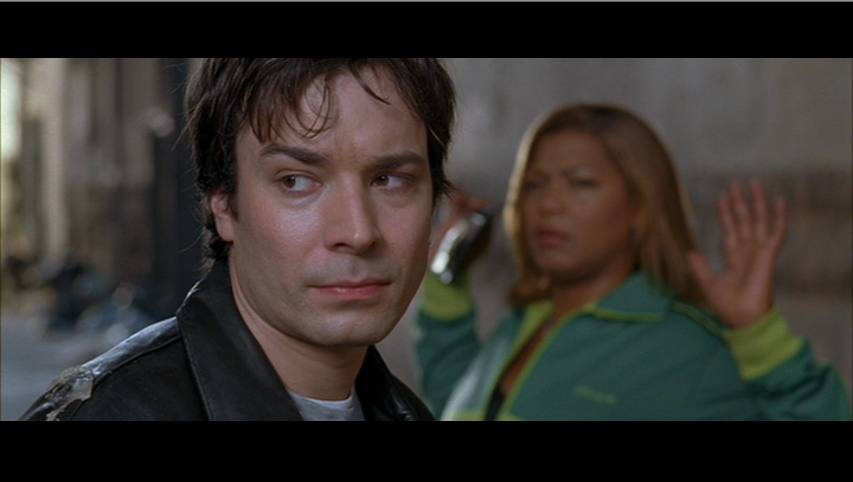A dramatic journey through the dreck we all know and love.
Written By Zak Attack
Why Did I Watch This?
Apparently the original version of this film is fairly well-regarded as it has three French-language sequels, the American remake (starring Jennifer Esposito), and a recent canceled television version (starring Jennifer Esposito… wait, what?!).
While that certainly looks terrible, the French have a knack for goofy action-comedies that make pulling the audience into their surreal world look effortless. This is especially true when Luc Besson’s name is stamped somewhere on the film. So maybe, just maybe, there’s a chance that this remake maintains some level of charm instead of the soulless collection of tropes it resembles.
I should also mention that when I first started in movie promotions it was 2004, the year that Taxi hit theatres. The idea of free crap was still new and exciting, so I have a strange amount of swag from this mostly forgotten movie, including a surprisingly high-quality messenger bag and a t-shirt I never wear.
How Did I Watch It?
Netflix/USPS was a little slow on the ball in the DVD exchange this week so I was forced to stay up way past my “bedtime” in order to view it in time for the piece. No libations during the viewing, but I had been out that night so I guess it counts.
As soon as the DVD starts, there is a prompt to watch the “Theatrical” or “Extended” cut of Taxi. Do I want to die knowing that I willfully chose the “Extended Cut” of a movie that Netflix thought I would give 1.3 stars? No, I don’t… Especially if every review online simply states “I couldn’t tell what was added in the extended version.” Theatrical it is.
What Did I Watch?
You know what cracks me up about writing this feature? When refining these articles, I’ll invariably head to a movie’s Wikipedia page in order to refresh my memory of the order of certain plot points or generally seep myself in the story. While some pages are woefully unhelpful, the vast majority are comically detailed. Taxi is no exception. The movie begins with a scene over the opening credits focusing on a bike messenger named Belle (Queen Latifah) in Manhattan performing all types of crazy, unrealistic stunts. Take it from me, a former Pedicab driver who’s been biking in the city for 10 years, there is no route where it’s easier to ride down the steps at the Union Square subway station, barrel through the open doors of a train, and zig zag through commuters only to pop back up a few blocks later. Regardless, the Wikipedia synopsis unnecessarily explains that her route broke a record when it clocked in at “13 minutes and 54 seconds”, as well as explaining that her retirement gift from the bike courier service was a supercharger for her “1999 Ford Crown Victoria taxicab.”
It may seem hypocritical of me to say this while writing an article about the movie… but what compelled someone to painstakingly track the details of this critically panned Queen Latifah/Jimmy Fallon vehicle? Even more telling: The plot summary was tagged as “too long” or “excessively detailed”. Nobody seems to be in a hurry to correct this error, though, since the helpful suggestion was posted in July of 2013.
After her introduction as a bike messenger, Belle immediately gets her hack license and gets to show off her parody of a souped up 1999 Crown Vic. A stuffy businessman hops in her taxi at Times Square and says “Get me to JFK Airport in 15 minutes!” Now, this is a post-9/11 movie, so what’s supposed to happen in 15 minutes? Certainly not take-off. He knows he’s going to stand in line for security for at least an hour and a half, so would 16 minutes really kill him? Regardless, with the push of a button Queen Latifah’s car transforms into an uglier, yet faster model. As a result, they survive the 15-mile drive through city traffic in nine minutes by taking suburban highways that are clearly on the West Coast and nowhere near New York.
Meanwhile, Jimmy Fallon plays Andy Washburn, a childlike idiot who has a problem with panicking whenever he gets behind the wheel of a car and continuously crashing into things. After railing through a bodega he gets his license taken away from him, but not his badge and gun despite clearly being inept at not only policework, but life in general. When he’s working the beat on foot, he gets a call about a bank robbery and pops into Belle’s cab to take chase. For the second time in 15 minutes, there are several close-ups of her supercharger rising out of the hood, license plate changing numbers, and full body kit with spoiler popping out of secret compartments. It’s a dumb repetition because if this were the first car transformation scene instead of the second, the audience would…
- Have something to identify with in Washburn’s flummoxed reactions
- Get a more exciting introduction to the titular vehicle during a bank robbery
- Not have to watch the same footage twice
As with quite a few other scenes, the entire earlier drive to JFK was ultimately all flash with no narrative purpose, resulting in diminishing returns during the more important sequences.
The bank robbers– who happen to be a group of Brazilian supermodels led by Giselle Bündchen– get away, but Belle’s encyclopedic knowledge of cars via sound alone (“With that much torque, she had to have an inboard torsion damper system with a push rod bell crank and double wishbone arrangement!”) helps them track down the villains. The idea that the bank robbers are models wasn’t in the original movie and is barely explored here. There is one scene where they get pulled over and throw the cop off guard by being clad in bikinis and another pretty rapey scene where Giselle sexually “frisks” Jennifer Esposito’s Lieutenant Robbins, but both are strictly for the audience and don’t tie-in to the the rest of the story at all. It’s like the filmmakers knew nothing else in the movie worked so decided to throw in some extra T&A for good measure.
Ultimately, through the power of Belle’s magic car knowledge and Washburn’s ineffectual enthusiasm, they manage to take down these expert criminals and save the day. The final chase scene is the only 10 minutes or so that even qualify Taxi as an action movie at all. Before that, there’s a lot of CGI and stunts that feel a touch too clean to provide any danger. But by the end, there are some really cool near misses and high speed maneuvers that do their job. As with his Fantastic Four movies, director Tim Story threatens to derail the whole experience with kooky hijinks and a liberal dose of cartoonish artifice. However, for the most part, the climax here kind of works.
I do feel the need to go off on Taxi for trying so hard to feel like a quintessential “New York movie” and failing so miserably. At one point, the models are getting away and Belle starts to think aloud about where they might be going. “The Queensboro [Bridge] will be a parking lot, so why would she be… oh, you slick! You trying to go West! But 68th Street’s gonna be gridlocked because Hunter College just started their Fall semester… unless you go through the school! (Cut To: Car driving through a quad while students dodge)” Not to nitpick, but a few things to point out here. Queensboro Bridge is on the East side connecting Manhattan with Queens, Brooklyn, and Long Island. So to “go West” from there, the car would have to cross the whole island. In no city, let alone New York, is facing crosstown traffic in Midtown a “slick” move in a getaway. And I don’t even know what to think about that comment about Hunter College. That’s on the Upper East Side! Students don’t drive to any school in Manhattan, let alone Hunter. They’d face worse foot traffic driving through Hunter’s “campus” than the streets around it. Let alone the fact that the colleges in Manhattan all have urban campuses. The “quad” at Hunter is four buildings at a city intersection.
It’s typically unfair to fault a movie for failing to meet a one’s own standards for somewhat esoteric knowledge. In this case, the average viewer who doesn’t live in New York (and even some that do) shouldn’t even notice. But when a movie seems to put all this work into providing in-depth details about the area, the consistent inaccuracies stick out like a sore thumb. Outside of the dialogue and the central conceit of yellow cabs, the details of New York have nothing to do with the plot. The characters mention intersection after intersection, but we never see Washington Square Park, the Statue of Liberty, Columbus Circle, the Chrysler Building, etc. etc. Later they have to go to Secaucus because it’s the only place that sells run-flat tires (probably not true), even though the NYPD doesn’t have jurisdiction in New Jersey and they’re clearly filming in Los Angeles. I’d be more forgiving if they simply called it Gotham and made up some schools or street names! It’s not the failure of Taxi to be a New York City movie that’s bothersome, it’s the sheer quantity of unresearched references.
Highlight?
The little moments of Taxi are the only pieces of comedy that actually work, which is a shame because it’s keeps aiming for such big comedy. There are quite a few very small gags that thankfully don’t call attention to themselves and are all the more effective. Interestingly, most of them come from Fallon and are subtle enough that they were likely improvised. When staking out a junkyard in “Secaucus”, Washburn rambles on and on with nervous energy about Belle’s interest in automobiles and faltering love life much to her chagrin. None of this “odd couple” dynamic is compelling at all. However, when the gang of bank robbers finally pulls up he aggressively shushes her even though he’s been the only one talking the whole time. It’s a typical, but effective joke for the buddy cop genre. That being said, those are the types of jokes that merely elicit snickers.
To be honest, the only laugh-out-loud gags were from Fallon riffing on scenes in the blooper reel over the credits. Usually this humor wouldn’t “fit” a traditional movie. But given the fact that Taxi already lacks consistency between character reactions and the levels of realism (or lack thereof), it doesn’t make sense why Story would relegate the only nuggets from filming that were actually funny to the credits.
Lowpoint?
Even with the throwaway jokes that I kind of liked, the movie is woefully unfunny. Every outright “gag” like the morphing of the car or Ann-Margret’s performance as Washburn’s perpetually drunk mother have neither the restraint to work as character-driven comedy nor the conviction to be taken as broad humor. A sequence where Washburn needs to pull out of a parking space results in his Daewoo bumping the cars in front and back of him eight separate times over about 45 seconds. Neither Fallon nor Latifah sell it outside of the basic level of “two actors doing a bit,” and it stops short of being moronically repetitive enough to be funny. Meanwhile, the movie’s idea of wordplay is Belle calling Washburn “Ace Dumbtura.”
The focus on a couple of two-dimensional characters in predictable comedic situations means that the film doesn’t earn its sentimental moments. They play it (mostly) straight when Belle takes Washburn out to drive and he finds his strength while singing the boilerplate, feelgood-movie pop song, “This Will Be” by Natalie Cole. If a movie is willing to admit that it takes place in an exaggerated version of our world, it requires an extremely skilled filmmaker to balance the need for these types of emotional character arcs. Unless there’s an Edgar Wright, Judd Apatow, Ricky Gervais, Tina Fey, etc. at the helm, it may serve the film to do without the schmaltz. Tim Story handles these moments with the subtlety of a New York Post headline.
Was It Worth Watching?
As his first big starring role, Taxi tried and failed to make Jimmy Fallon a cinematic superstar. Another remake of a European film, Fever Pitch, was his second big role. That’s it. Then he sat around for a couple of years and became the late night king of creating viral videos to watch the next morning. It’s hard to blame his charmless performance as Andy Washburn on anything but the script. The character is simultaneously full of naïve glee, absolute stupidity, and mopey longing. In Beverly Hills Cop III, Judge Reinhold was forced to play Billy Rosewood as a dopey shadow of what the character represented in the previous two films. Jimmy Fallon in Taxi is the special needs younger brother of the dopey shadow of Reinhold’s worst performance of Billy Rosewood.
Queen Latifah is passable as the fairly bland main character, and that’s probably one of the best things I can say about the movie. The lack of a true protagonist is where the intellectual disconnect really occurs. Latifah gets the most screentime and is more or less the audience surrogate to play it straight against Fallon’s wacky antics… but he’s the one who gets a character arc when he overcomes his fear of driving. Meanwhile, she’s the one with the wacky car made out of magic. This creates a unique dynamic, but it’s immediately apparent why this type of pairing isn’t more common. It doesn’t work.
This movie is markedly not worth watching. What is worth watching, however, is a fairly racist, uncomfortable interview I came across while researching the movie. It starts out innocently ignorant when he asks if Queen Latifah taught Fallon any hip-hop moves (she is a rapper, after all), but only goes downhill from there. Enjoy, I guess?
Action A Go Go on Twitter and Instagram | Follow Zak Attack on Twitter and Letterboxd | Be sure to leave your thoughts in the comments section!
Zak has been an avid movie fan since his mom made him cover his eyes before the “icicle stabbing” when they rented Die Hard 2 in 2nd Grade. As a consolation, in 6th grade he got straight A’s so she gave him the entire Die Hard trilogy on VHS. The rest is history.
The views and commentaries expressed on these pages are solely those of their authors and are not necessarily either shared or endorsed by ActionAGoGo.com
All images courtesy of EuropaCorp

